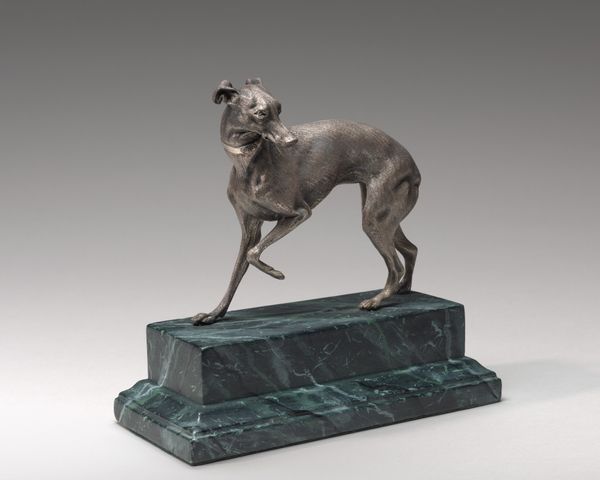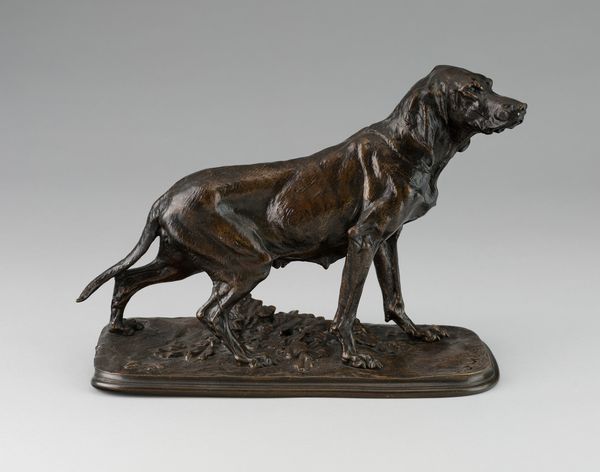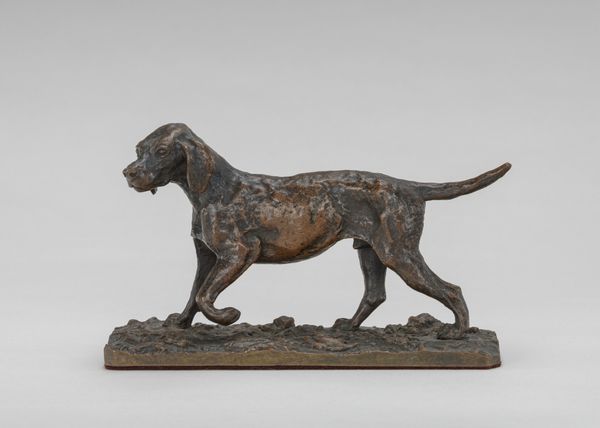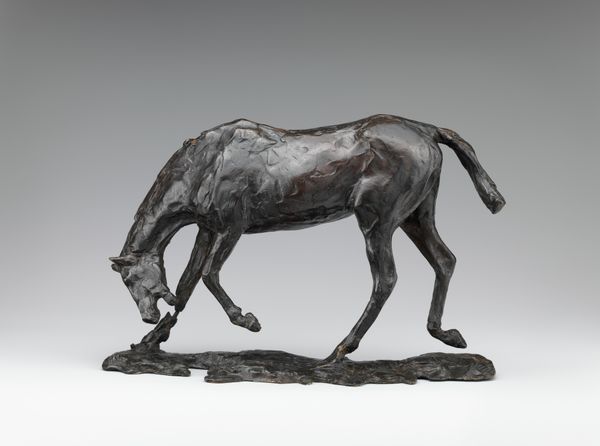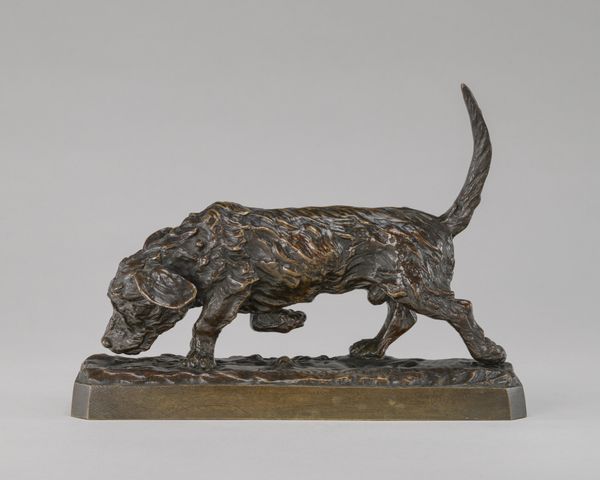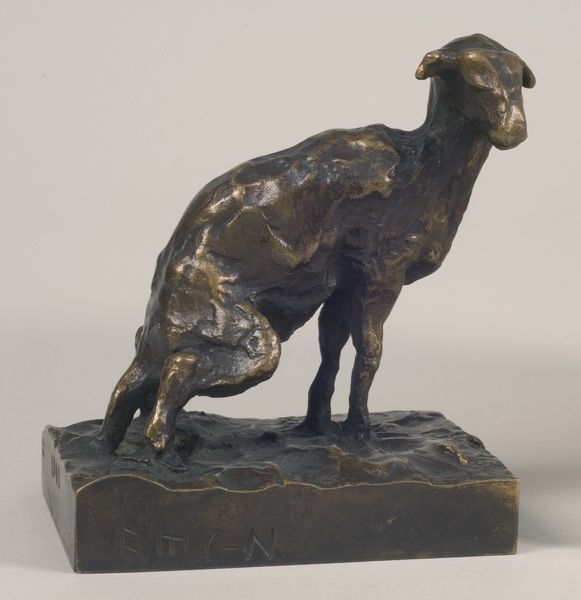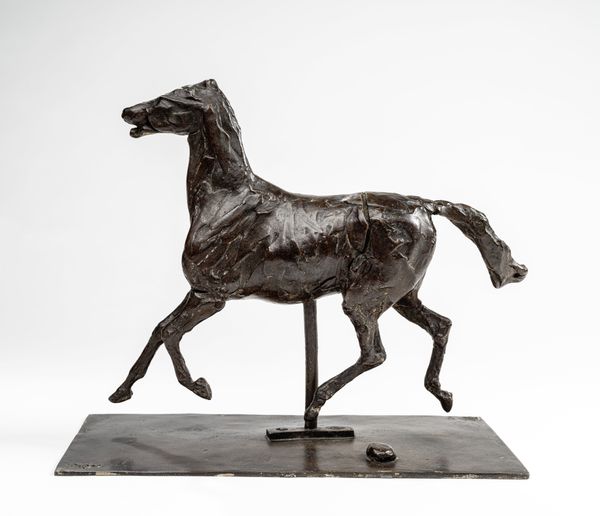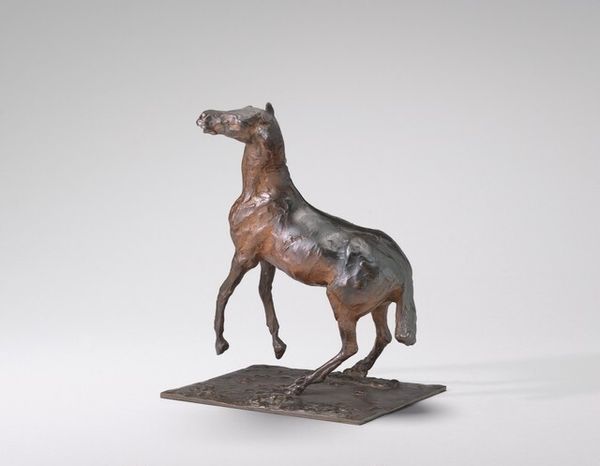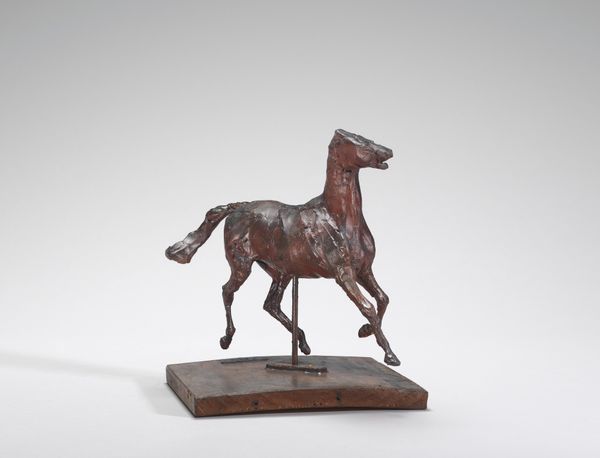
bronze, sculpture
#
sculpture
#
bronze
#
figuration
#
sculpture
#
realism
Dimensions: overall: 13.3 × 3.8 × 14.6 cm (5 1/4 × 1 1/2 × 5 3/4 in.)
Copyright: National Gallery of Art: CC0 1.0
Editor: So, here we have "Whippet," a bronze sculpture by Pierre-Jules Mêne, from around 1848. The elegance of the dog really strikes me. What do you see in this piece, considering the context of its time? Curator: It's tempting to see it solely as a celebration of aristocratic leisure, and the sentimental role animals played for elites. But let's consider the rise of the bourgeoisie in the mid-19th century. These sorts of artworks – smaller bronze sculptures, easily reproduced – speak to a new market of collectors seeking to emulate the lifestyles of the aristocracy. Editor: So it’s less about the dog itself, and more about the social aspirations it represents? Curator: Partly. Think about the function of sculpture in public spaces. Often it commemorated significant political figures or military victories. Here, a domestic animal takes center stage, a sign of shifting cultural values. Consider the Royal Academy exhibitions at the time - how does a piece like this intersect with ideas around 'taste' that were being promoted to wider audiences? Editor: That's interesting. It becomes less about individual artistic expression and more about navigating social expectations and participating in cultural trends. Was this a conscious choice for Mêne? Curator: Probably both! He was a shrewd businessman as well as an artist. His works tap into a pre-existing fascination with animals – think of Landseer – while also participating in a new industrial means of artistic production. To what extent are these animal sculptures anthropomorphic, representing ideal human attributes such as loyalty, alertness, or trustworthiness? And, in this way, what function are these sculptures expected to serve, on behalf of, and on display to, the public? Editor: I hadn’t thought of the commercial aspect so explicitly, but it makes perfect sense in the context of the expanding middle class and industrial reproduction. Thank you. Curator: It's a constant interplay between artistic vision and social forces. These objects tell us a lot about their makers, their markets, and what their publics value.
Comments
No comments
Be the first to comment and join the conversation on the ultimate creative platform.
